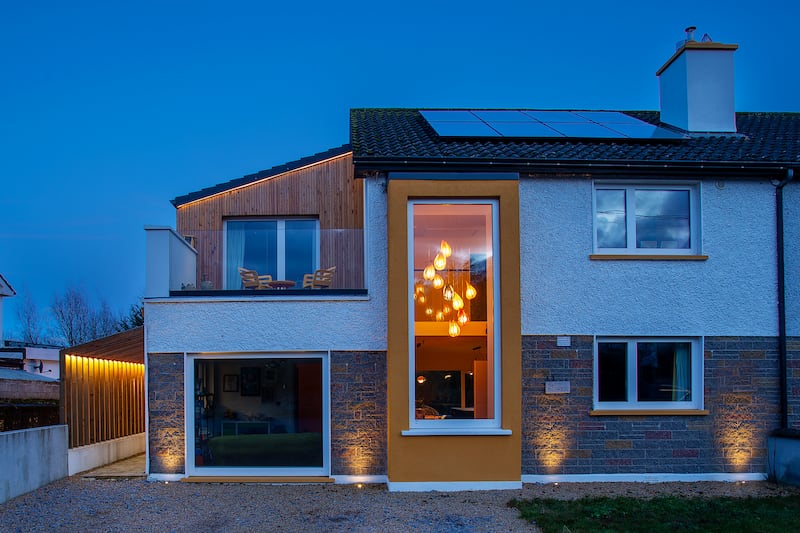Lighting in a home is both practical and functional but it can also affect our mood, create different atmospheres and even have an impact on our health. Far from being an afterthought, such is its importance for people who are about to build or renovate their home that many seek expert help to furnish their space with bespoke lighting systems.
Willie Duggan, who runs Willie Duggan Lighting with his sister Monica, offers this service and sees demand growing. He also runs regular lighting design masterclasses for interior designers and other interested parties as this central aspect of interiors comes under the spotlight.

When it comes to lighting, Duggan’s mantra is “location, location, location”. The right lighting used in the right place can transform a room, he says.
“Our philosophy would be to give the light where it is needed,” he explains. “For example, in the kitchen you need good task lighting when you are cooking but often you can have downlights behind your head and you are casting shadows, which is no good.”
READ MORE
Indeed, spotlights or downlights have become much-maligned in recent years but Duggan says this can sometimes be a case of overuse.
“People tend to overuse downlighting but it’s about using the right quality downlights in the right location,” he adds.
In agreement is Jo Calver, founder and codirector of Isla James Interiors, a UK-based interior design consultancy which also offers bespoke lighting design packages.
“For most people, their impression of lighting is great big massive downlights that give light over everything – and you will hear people say they don’t like spotlights and downlights,” she says.
“I understand that, because the ones they are thinking of are the huge ones that light up everywhere and make everything feel really flat but the downlights that a lighting designer uses are extremely tailored to a specific look and the beam angles are specifically chosen to bring the light to a very specific location, whether it’s a painting or a wall panel, or even to highlight a cushion on a chair.”

Beyond task lighting, both experts agree the most important thing about lighting a home is creating the perfect ambience.
“In the evening a lot of our lighting is much too harsh,” Duggan says. “White light has all the colours of the rainbow in it, including blue light, which is the same as what we get from screens.
“For the evening, you are trying to bring in warmer colour temperatures, more ambient warm light, so it lets your body know it’s the evening and it’s time to wind down. If we are using the wrong type of lighting in the evening it can affect our mood and our sleep.”
“It’s like going to a play where one scene is very moody and low level lighting, then the next scene is noise and jolly with lots of bright light. That’s the same as in your home – you develop these different layers of lighting so you can create a mood within your home,” Calver explains, adding that carefully considered layered lighting schemes help to achieve this.
With the touch of a button you should be able to create different moods in the one space
— Jo Calver
“You can even have a mood in your bathroom. You can have a shower at night and have minimal light on because there’s lighting in shower niches and hidden recesses in the ceiling. With the touch of a button you should be able to create different moods in the one space.”

Most people, Calver says, don’t differentiate between architectural lighting and feature lighting – but they are “very, very different”.
“Architectural lighting is the unseen lighting – the downlights, the LEDs hidden in joinery,” she explains. “And the feature lighting delivers soft lighting – so, lamps, wall lights, pendants; all of those. It’s the combination of the two that makes the difference between a successful and unsuccessful lighting scheme.”
Duggan adds: “People just think of it as purely functional but lighting can be emotional and even impact our health. It’s like music, it creates an atmosphere.”
High-end lighting is now accessible to everyone where previously it wouldn’t have been, Calver notes. “Lighting design is an art. When people understand and grasp that, their whole perception of lighting changes.”
Dos and don’ts of lighting your home
- Integrated and hidden lighting is impactful and cost-effective. Think LED lights at skirting-board level, in the ceiling or within joinery. Strip LED lighting has made this easier than ever.
- Use the right light bulbs. Calver says bulbs with a Kelvin (colour temperature) of 2,700 or 3,000 degrees are ideal for residential property. “Above that the light gets more blue and white and gives a colder feel.”
- Install a dimmer. “With LEDs you get quite a variety of lumen (light output) but if you have it on a dimmer switch, then you can control the amount of lumen that comes out of it – so we always recommend dimmers as well,” says Calver. If you haven’t? Bluetooth also allows for extra control without an extra cable, says Duggan.
- Try to think ahead, advises Duggan. “Run a cable into the middle of the room – maybe you don’t use it right now but in the future you might have a table there and can install a pendant.”













